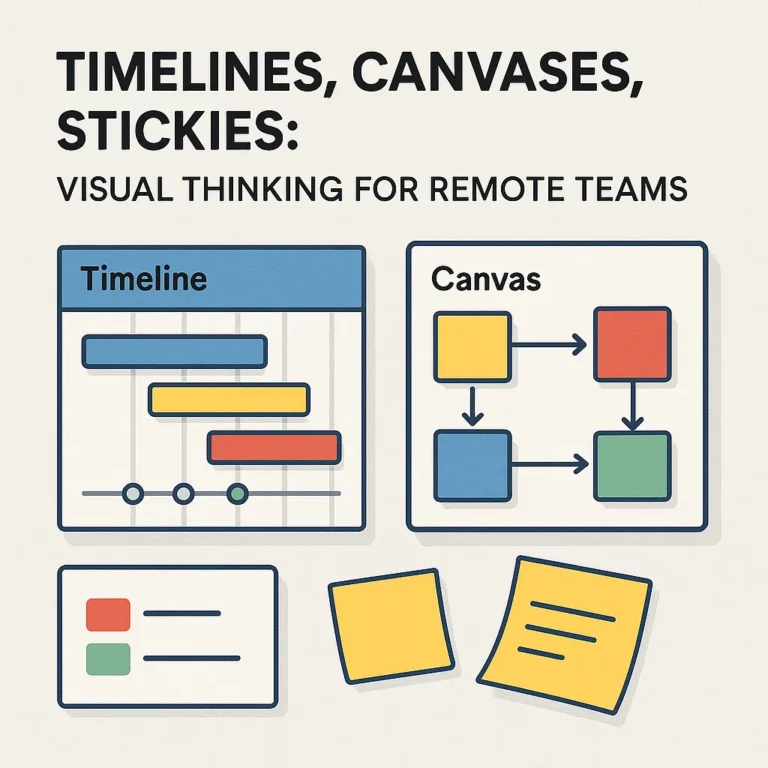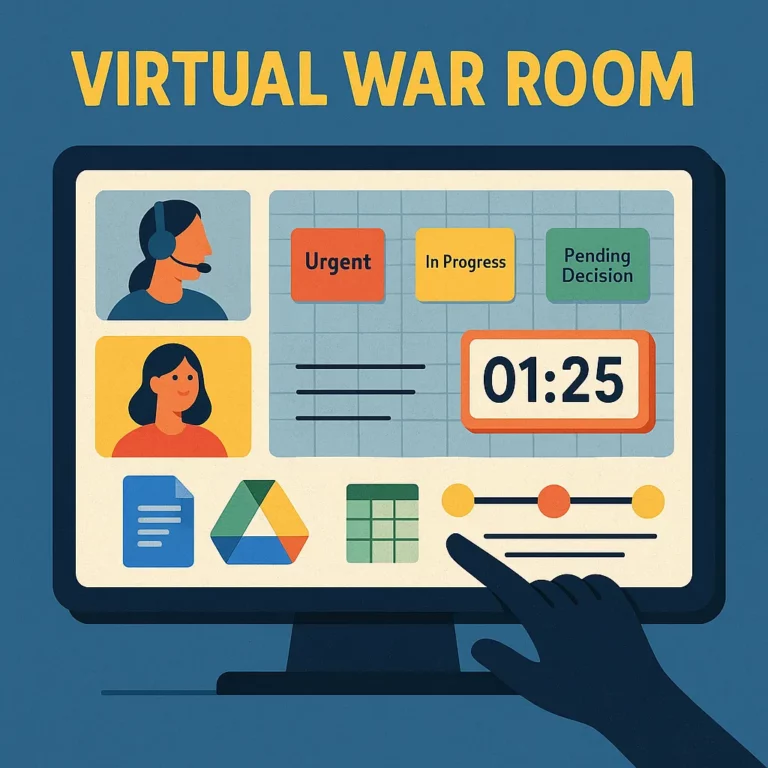Remote work promised freedom, but for many, it delivered burnout. Video call after video call, message after message—it’s no wonder that by the end of the day, your brain feels fried. That tired, foggy, emotionally-drained state has a name: Zoom fatigue. It’s what happens when constant synchronous communication—Zoom, Meet, Slack—leaves no time to think. The fix? Shift from real-time everything to asynchronous collaboration. It’s not just a schedule tweak. It’s a way to reclaim your time, sharpen your focus, and work with depth again.
What’s Wrong with Synchronous Work?
Let’s break it down. Synchronous work demands everyone be online and alert at the same time. Sounds fine, until you realize it creates more friction than flow.
| Problem | Impact on the Team |
|---|---|
| Non-stop video meetings | Burnout, reduced concentration, declining motivation |
| No space for deep work | Teams react instead of thinking critically |
| Time zone dependency | Limits inclusion of global team members |
| Lack of documentation | Info gets lost, decisions get repeated |
Being always-on doesn’t equal being productive. It often just means being busy—and drained.
What Is Asynchronous Collaboration?
Async collaboration is working together—on your own time. It means team members don’t need to be present simultaneously to contribute or move a project forward. Here’s how it works:
- Team members receive tasks, updates, or questions at a time that suits their flow
- Clear deadlines exist, but when you complete the task is flexible
- Feedback, comments, and decisions happen in shared spaces—without live meetings
Async lets people operate when they’re mentally sharp, not just when the calendar says it’s time.
Tools That Make Asynchronous Work Actually Work
Switching to async doesn’t mean ditching structure. It means designing it differently—with the right tools.
Shared Comments and Collaborative Notes
Why schedule a meeting when you can leave a thoughtful comment?
- Drop your idea or question into a shared doc, whiteboard, or canvas
- Add links, screenshots, screen recordings, or voice notes for context
- Let others respond when they’re ready and focused
This encourages thoughtful replies—not rushed opinions mid-call.
Meeting Recordings and Video Digests
Not everyone has to be in the room (or Zoom). Instead:
- Record live calls and tag timestamps for key decisions
- Share a quick recap video or message summarizing outcomes
- Include links, quotes, and action items in a simple digest
This way, people stay informed without staying stuck in real-time.
Timers, Cycles, and Async Timeboxes
Deadlines don’t disappear—they just become smarter.
- Set clear cutoffs for comments, updates, or approvals
- Use work intervals (e.g. 12–48 hour windows) rather than fixed time slots
- Encourage async sprints: short bursts of solo work followed by group feedback
This maintains momentum without micro-managing time.
Solo Workspaces and Idea Zones
Create spaces where people can think without needing a host.
- Use Miro or digital canvases for brainstorming without moderation
- Stickies, tags, and clusters allow ideas to be organized naturally
- Let the board evolve over a few days as team members build on each other’s thoughts
No Zoom needed—just a shared brain in progress.
Sample Async Workweek: A Low-Zoom Blueprint
Need a reset? Here’s a simple weekly structure to reduce call overload:
| Day | Focus |
|---|---|
| Monday | Team planning in Miro or Canvas with comments open until EOD |
| Tuesday–Wednesday | Deep work + async collaboration via Notion, Docs, or Figma |
| Thursday | One 30-minute call max with a timer and strict agenda |
| Friday | Async reports: everyone posts 3 wins + 1 blocker to a shared thread |
This rhythm reduces screen fatigue while keeping everyone aligned.


